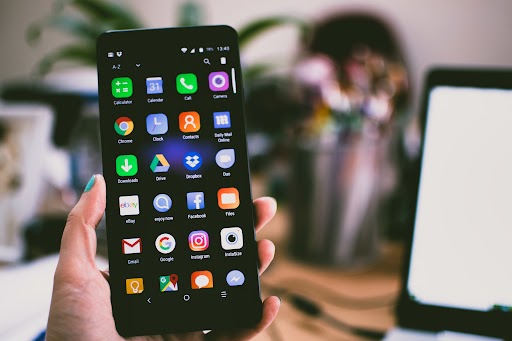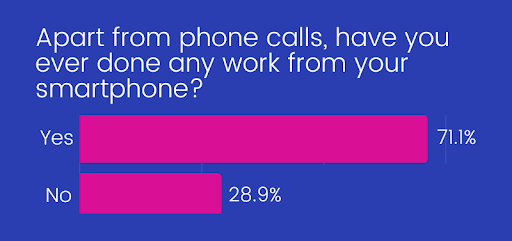In an era where smartphones are often called “essential tools” for work—used for emails, task management, or on-the-go communication—it’s easy to assume every job depends on them. However, many occupations remain largely unaffected by smartphone reliance, as their core tasks revolve around manual skill, physical labor, or deep focus. These jobs prioritize hands-on expertise over digital connectivity, and in some cases, smartphones can even hinder productivity (e.g., by causing distractions or risking damage in harsh environments). Below are key examples of such roles, along with why smartphones are unnecessary to their daily functions.

1. Traditional Artisans: Potters, Woodcarvers, and Handweavers
Traditional artisans—such as potters, woodcarvers, and handweavers—create goods using age-old techniques that rely on muscle memory, precision, and physical tools, not digital devices. A potter’s daily work, for instance, involves kneading clay to remove air bubbles, shaping it on a spinning wheel, hand-painting designs with glaze, and monitoring a kiln’s temperature (using specialized analog thermometers, not phone apps). None of these steps require a smartphone: the potter’s skill lies in feeling the clay’s texture and adjusting pressure, not checking messages or using digital tools.
Similarly, a woodcarver spends hours using chisels, sandpaper, and saws to shape raw wood into sculptures or furniture. Their focus is on matching the wood’s grain to the design, a task that demands undivided attention—something a smartphone’s notifications would disrupt. Even client communication (e.g., discussing a custom order) often happens face-to-face in the artisan’s workshop or via a landline; there’s no need for texting or video calls to complete the work. For these artisans, smartphones are irrelevant to their craft—they can create high-quality pieces without ever touching a digital device.

2. Manual Agricultural Workers: Fruit Pickers and Vegetable Harvesters
In rural areas and farms, manual agricultural workers like fruit pickers and vegetable harvesters perform labor-intensive tasks that depend on physical strength and speed, not smartphones. A strawberry picker’s typical day involves moving through fields with a basket, selecting ripe berries by hand, and depositing them carefully to avoid bruising. Their work is measured by volume (e.g., baskets picked per hour), and coordination with supervisors happens through in-person calls (e.g., a foreman yelling instructions across the field) rather than text messages.
Smartphones are not just unnecessary here—they’re often impractical. Fields may lack cell service, and the work involves constant bending, dirt, and moisture, which can damage phones. Workers also have no need for digital tools: they learn to identify ripe produce through training (not apps) and track their progress through physical counts (not phone spreadsheets). For these laborers, the only “tools” they need are their hands, a basket, and sometimes gloves—smartphones offer no benefit to their daily tasks.

3. Manual Construction Laborers (Non-Supervisory Roles)
While construction supervisors or engineers may use smartphones to access blueprints or coordinate deliveries, non-supervisory manual construction laborers—such as material haulers, concrete mixers, or bricklayers—rarely need them. A bricklayer’s job, for example, involves mixing mortar to the right consistency, laying bricks in straight lines (using a spirit level), and smoothing joints with a trowel. They follow verbal instructions from on-site foremen (e.g., “Lay three rows here”) and use physical tools (trowels, levels, wheelbarrows) to get the job done.
Smartphones are a liability in this role: construction sites are dusty, noisy, and full of heavy machinery, making phones easy to drop or damage. Additionally, the work requires constant focus—glancing at a phone could lead to mistakes (e.g., uneven brickwork) or safety risks (e.g., not noticing a passing crane). Laborers also don’t need to communicate via phone: they collaborate with nearby coworkers through face-to-face conversations, and any urgent updates come directly from supervisors on-site. For these workers, smartphones add no value and may even put them at risk.

4. Independent Studio Artists: Oil Painters and Sculptors
Independent studio artists, such as oil painters or sculptors, spend most of their time in creative work that demands uninterrupted focus—something smartphones actively undermine. An oil painter’s process involves mixing pigments to create custom colors, sketching compositions on canvas, and applying layers of paint to build texture. This work relies on observation (e.g., studying light and shadow) and emotional expression, not digital tools. A painter might spend hours refining a single brushstroke; checking a smartphone mid-session would break their concentration and disrupt their creative flow.
While some artists use computers to manage orders or share work online outside of creative hours, their core job—painting—requires no smartphone. Client meetings often happen in the studio (where the artist can show physical sketches), and deadlines are tracked with a paper calendar, not a phone app. For these artists, smartphones are a “post-work” tool at best; they can produce entire collections without using one during their creative process.
Conclusion
These jobs prove that smartphones are not universal work necessities—many roles thrive on manual skill, physical effort, or focused creativity, where digital devices offer no practical value. For artisans, farm workers, construction laborers, and studio artists, the key to success lies in hands-on expertise, not connectivity. In a world obsessed with digital tools, these jobs remind us that some work is best done “unplugged”: free from notifications, distractions, and the pressure to stay constantly connected. Far from being “outdated,” these roles highlight the enduring importance of human skill and focus in the modern workforce.
